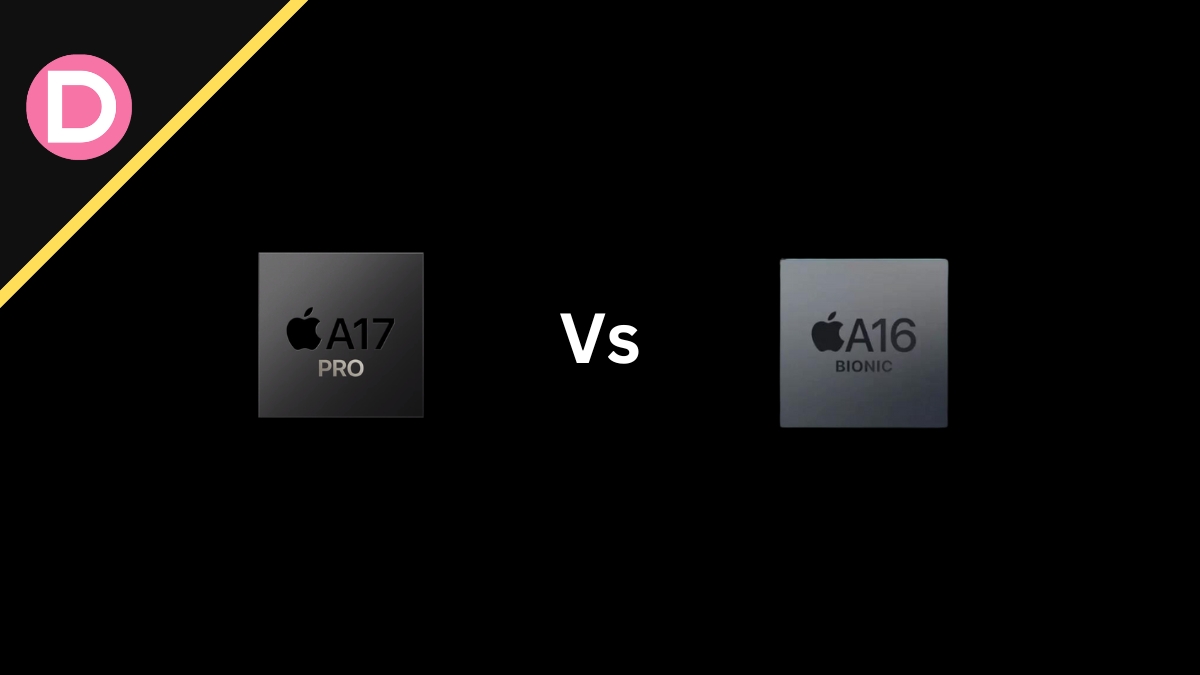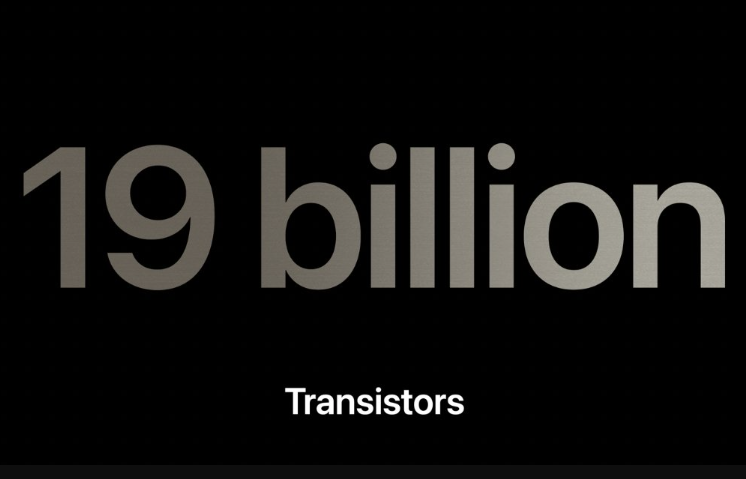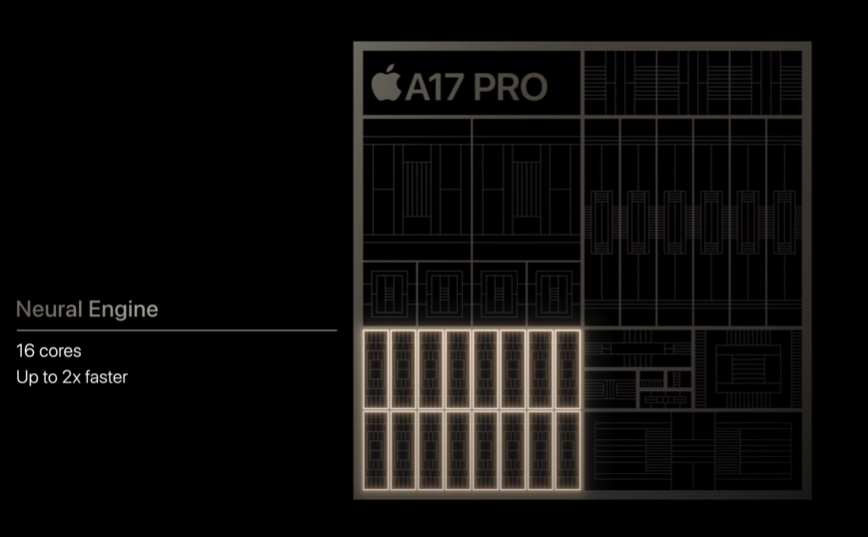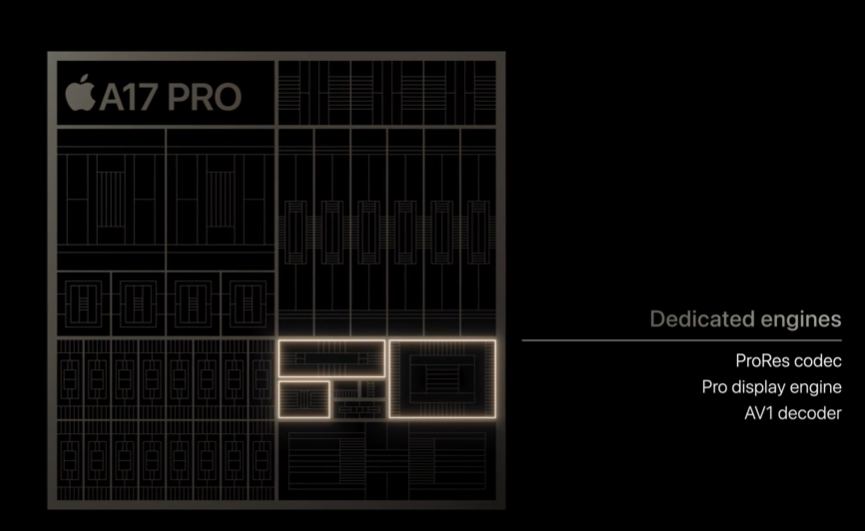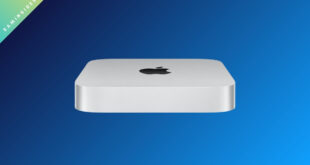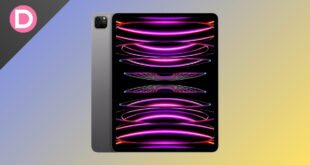The Wonderlust event has just wrapped up, and Apple has announced the new generation of iPhones, the iPhone 15 series. While the vanilla iPhone 15 and the iPhone 15 Plus come with last year’s A16 Bionic chip, the iPhone 15 Pro and the iPhone 15 Pro Max come with the latest A17 Pro chip.
This is perplexing since many users might be worried about the performance of the A16-powered iPhone 15 in the long run. Should you consider the Pro model just because of the A17 Pro? Is it worth upgrading from an A16 Bionic-powered iPhone? What’s the difference between the A17 Pro and the A16 Bionic? Let’s look at the differences to find out.
A17 Pro vs. A16 Bionic Comparison
The A17 Pro was just announced. Let’s look at the improvements it brings over the A16 Bionic.
1. CPU Performance
The Apple A17 Pro’s CPU has a 6-core CPU configuration, an improvement over its predecessor, the A16 Bionic. The CPU is again based on a 2 + 4 split between performance and efficiency cores. The performance cores of the A17 Pro are capable of clock rates of up to 3.70 GHz (as per leak).
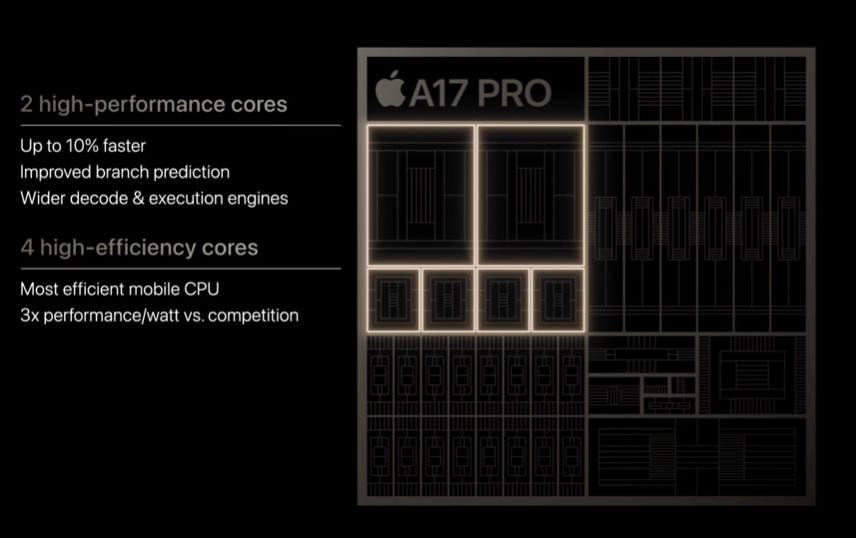
This, at least on paper, is a significant improvement over the A16 Bionic, which reached a maximum clock speed of 3.42 GHz. As for the efficiency cores, there are four, which is similar to what we have on the A16 Bionic.
More importantly, the A17 Pro is built on TSMC’s latest 3nm fabrication process, which gives it a clear edge over the A16 Bionic—the 3nm fabrication process results in improved performance and greater power efficiency.
2. GPU Performance
Moving on to the GPU, the A17 Pro retakes the win. It has one extra GPU core, i.e., 6 GPU cores, as opposed to the five on the A16 Bionic. This extra GPU core with the increased memory bandwidth will result in significant performance gains.
Apple claims that the new GPU on the A17 Pro is up to 20% faster than the one on the A16 Bionic. The A17 Pro also has hardware-accelerated ray tracing, which is four times better than the software-based ray tracing on the A16.
It also uses the Neural Engine to do something called MetalFX Upscaling, which improves graphics using less power. However, real-life performance remains to be seen.
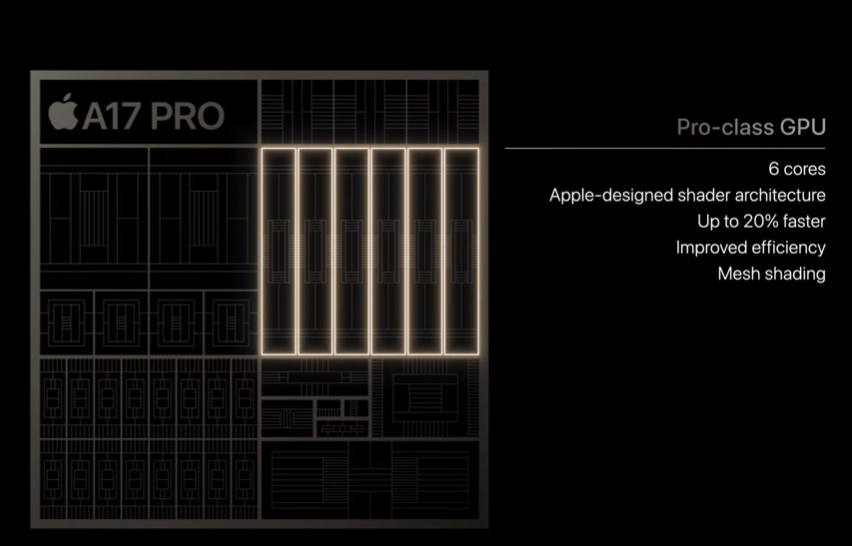
3. Memory Bandwidth
Apple has also increased the memory bandwidth on the A17 Pro. The A17 Pro has more memory bandwidth as compared to the A16 Bionic. This increase in memory bandwidth and the 6-core GPU should improve graphics performance in games and other graphics-intensive tasks.
4. RAM
Unexpectedly, the A17 Pro uses the same LPDDR5 RAM technology as the A16 Bionic. However, whether the amount of RAM has increased from 6 GB to 8 GB or not will only be known later. This should potentially improve the RAM management on the A17 Pro-powered iPhones.
5. Hardware-Accelerated Ray Tracing
Apart from the extra GPU core, the A17 Pro also supports hardware-accelerated ray tracing, which makes it one of the first to do so. Apple was caught testing the feature on the A16 Bionic, but it didn’t make it to the final product due to overheating and power efficiency concerns.
Apple has outright mentioned that this is four times better than the software-based ray tracing on the A16 Bionic. Regardless, since the A17 Pro is based on TSMC’s 3nm fabrication process, it should be able to handle the ray tracing pretty well.
6. Transistors
Thanks to TSMC’s 3nm fabrication process, the A17 Pro has 19 billion transistors. This significantly increases over the 16 billion transistors on the A16 Bionic. The A17 Pro should have faster data processing and improved efficiency with more transistors. This makes the A17 Pro 10% faster than its predecessor.
7. Improved ISP (Image Signal Processor)
Several improvements have been made to the Image Signal Processor on the A17 Pro. Last year, the A16 Bionic brought some significant ISP improvements, and the A17 Pro takes it even further with the new Photonic Engine. Apple has also improved the HDR performance with Smart HDR 5.
This means that A17 Pro-powered iPhones will be able to take better photos and videos when compared to the ones powered by the A16 Bionic. The new and improved ISP will result in more vibrant, true-to-life, and consistent camera results.
In addition, the A17 Pro also supports Mesh shading for the first time. On the video front, the A17 Pro supports 4K Dolby Vision HDR, Apple ProRes, Cinematic Mode, and Action Mode (2.8K) @60 FPS.
The A16 Bionic supports all these, but ProRes and Cinematic Mode are capped at @30 FPS. Both the chipsets can capture 48MP Pro RAW images. However, the A17 Pro can capture 48MP HEIF images too.
8. Connectivity
Although we expected Apple to use their 5G modem this time, that seems to have been pushed back for the A18 Bionic/Pro. Apple is again using Qualcomm’s 5G modem, which is the Snapdragon X70 this time.
Both the modems have peak download and upload speeds of up to 10 Gbps and 3.5 Gbps, respectively. The Snapdragon X70 is more reliable and power-efficient than the X65 modem on the A16 Bionic. It also has certain AI features for better coverage and lower latency.
Coming to Bluetooth and Wi-Fi, both A17 Pro and A16 Bionic support Bluetooth v5.3. However, there is support for Wi-Fi 6E on the A17 Pro, which is twice as fast.
The A17 Pro has a dedicated USB Controller that supports USB 3 and transfer speeds of up to 10 Gbps. This is 20 times faster than what the A16 Bionic supports.
9. Neural Engine
Apple has also improved the Neural Engine on the A17 Pro. The 16-core Neural Engine is now two times faster than the one on the A16 Bionic. Also, it can perform 35 trillion operations per second, which is a pretty significant jump from the 17 trillion operations per second on the A16 Bionic.
10. Dedicated Engines
Apple A17 Pro also has three dedicated engines for the first time. In addition to the ProRes codec and the Pro display engine, Apple has also included the AV1 decoder, which means we will finally get better image quality when streaming videos. There is no such engine on the A16 Bionic.
Conclusion
That’s it for the differences between the Apple A17 Pro and the A16 Bionic. If you look at the numbers and the synthetic benchmarks, the A17 Pro seems significantly better than the A16 Bionic. However, the real-world performance is yet to be seen. What are your thoughts? Let us know in the comments section below.
